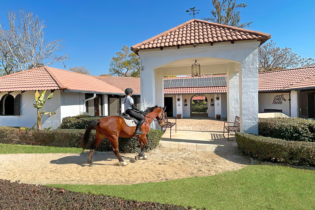Introducing Knot’s Dump
Solid waste disposal in countries across Africa poses a huge problem. Unfortunately, environmental damage from solid waste is increasing at an alarming rate. To address this issue in its own small landlocked country, Swaziland created The National Solid Waste Management Strategy, which has developed a long-term plan up to 2015. Swaziland, a distinctly tropical area in Southern Africa, is characterised by long hot summers with low, but variable rainfall. It is precisely these conditions that caused the inhabitants of larger cities like Manzini and Mangwaneni to complain about the malodorous dumpsites in their surrounding areas. A proposal was made to relocate these landfill sites to the outskirts of remote rural towns, like Bhunya, whose closest border post to South Africa is Sandlane via the town of Amsterdam. It was at Bhunya that Kaytech’s geosynthetic clay liners and bidim geotextiles played important roles. Golder Associates, which provides comprehensive civil, geotechnical and environmental consulting services worldwide, was asked to advise on this project, which commenced in July 2012. When natural clay in the area was found to be substandard, Stefanutti and Bressan, the main contractor on the project, proposed the use of Kaytech’s EnviroFix Thermal Lock Geosynthetic Clay Liners (GCLs) to line the base of the new landfill site, which was to be known as Knot’s Dump. Technology unpacked EnviroFix is produced by distributing a uniform core of natural sodium bentonite clay between two durable geotextile outer layers to form a hydraulic barrier when hydrated. Fibres from the upper nonwoven geotextile are then needle punched through the layer of bentonite and incorporated into the lower woven or nonwoven/woven composite carrier geotextile, thereby forming a strong mechanical bond between the fabrics. The thermal lock heat-treating process, used to more permanently lock the needle punched fibres into place, results in the product’s unique properties, which include increased internal shear resistance and long-term creep resistance. The sodium bentonite swells as water enters its clay platelets and, when hydrated under confinement, forms a low permeability clay liner with the equivalent hydraulic protection of approximately one metre of compacted clay. The intensive EnviroFix quality control programme, which ensures consistent hydraulic and physical properties through the latest EN-ISO and ASTM procedures, minimises the expensive and time consuming on-site testing that is required for compacted clay liners.EnviroFix can completely replace – as in this project – or significantly reduce the required thickness of the compacted clay layer. This results in less excavation and compaction and importantly increases containment volume, which in a landfill means increased revenues. Used alone, or in conjunction with a geomembrane, EnviroFix is resistant to the deleterious effects of differential settlement and, with adequate soil cover, desiccation and seasonal temperature fluctuations are minimised. This outstanding product can also be used for liquid containment and canals as well as secondary containment.
With its extensive experience in installation of geomembranes and dam linings, Aquatan was awarded the contract to install Kaytech’s EnviroFix and bidim layers. The company was advised on Kaytech’s bidim A0 as the drainage separator between the filtration system and bidim A8 for the protection layer. Since 1978, Kaytech has been manufacturing its range of nonwoven, 100% polyester, continuous filament bidim geotextiles that provide significant advantages including better modulus of deformation, better creep stability, higher breaking strength, better resistance to high temperatures and less sensitivity to UV degradation – important factors in this particular application. Heavy grade bidim not only provides excellent protection to liner systems, but also significantly extends the life of the lining system. Its resistance to abrasion and piercing while still retaining a high tensile strength makes bidim the ideal cushioning protection whether installed above or below the liner system. Ease and speed of installation compared to sand protection layers is a great advantage and the in-plane drainage characteristic dissipates pore water pressure build-up beneath the liner. Project outline In total, 5 000 m2 of EnviroFix X800, the only suitable product for this region, and 73 000 m2 each of bidim A0 and bidim A8 were installed. The bidim A0 and A8 quantities equate to 155 462 and1 013 888 recycled PET cold drink bottles, respectively. “Kaytech continues to provide innovative, engineering solutions using recycled PET (rPET) in its products. By doing so it supports the recycling sector through the collection and recycling of PET bottles, and assuring an end use market for rPET in South Africa,” says Cheri Scholtz, CEO of PETCO, the industry body for recycling of PET plastic in South Africa. Stefanutti and Bressan’s expertise in constructing new landfill cells as well as the closure of existing landfill sites makes it a leader in Swaziland. The company also operates in line with international environmental policies by establishing landfills that allow effective waste disposal while preventing the ingress of waste contaminants into subterranean water systems. To date, Stefanutti and Bressan has been involved in the installation of thousands of square metres of Kaytech’s EnviroFix and has complete trust in the efficacy of this product. The combination of contractors’ expertise and the cost-effective, top performance of Kaytech’s products resulted in Swaziland’s Knot’s Dump being another highly successful project.






